
Emilia Clarke feared being fired from Game of Thrones after brain haemorrhage
Emilia Clarke has revealed she was afraid of being fired from Game of Thrones after she suffered a brain haemorrhage in 2011. Clarke, 36, played “Mother of Dragons” Daenerys Targaryen on the hit HBO adaptation of George R R Martin’s fantasy novel series A Song of Ice and Fire. The British actor revealed she “was struck” by the bleed on the brain after filming the first season of the show, in a 2019 essay for The New Yorker. Clarke described how she began to feel a “bad headache coming on” while she was getting ready to work out at a gym in north London “to relieve the stress” around the release ofThrones. Soon after, the star collapsed and was taken to hospital. “The diagnosis was quick and ominous: a subarachnoid hemorrhage (SAH), a life-threatening type of stroke, caused by bleeding into the space surrounding the brain.” she wrote at the time. In a new interview with Harper’s Bazaar, the Me Before You star reflected on being diagnosed with the brain condition that turns fatal for a third of all patients, and how she feared it would cost her the part which eventually catapulted her to global fame. “I wasn’t afraid of dying,” she said. “I was afraid of being fired! “I decided: ‘This is not something that’s going to define me’. I never gave into any feeling of ‘Why me? This sucks’. I was just like – gotta get back on it,” the Emmy winner added. Clarke also said she felt “very ashamed” and like she was “broken” after a routine operation to address a second bleed went horribly wrong, as she worried the show’s producers would see her as an “unreliable person that they’ve hired” for the job. After the second surgery, Clarke experienced aphasia – a disorder that impacts a person’s ability to speak or understand speech – as she worried about the security of her job which “centred on language, on communication”. “Without it, I was lost,” she wrote in the first-person essay. Elsewhere in the new interview, Clarke admitted “I might have turned into a right old d***head” if she hadn’t had the brain haemorrhages, “thinking I was the bee’s knees, living in Hollywood”. “I’m so much more aware of what’s happening, in the moment that it’s happening. I don’t worry about failure – I thrive on failure! If something goes wrong, I always think you can fix it. It hurts, it’s scary, but then you can do anything,” Clarke, who co-founded medical charity SameYou for survivors of brain injuries, added. Read More Duchess of York ‘proud’ to launch breast cancer campaign on Loose Women Doctor highlights most commonly misdiagnosed health conditions in women Mom explains how to ‘raise your baby like it’s your third’ Duchess of York ‘proud’ to launch breast cancer campaign on Loose Women Doctor highlights most commonly misdiagnosed health conditions in women Mom explains how to ‘raise your baby like it’s your third’
2023-11-02 01:18

Duchess of York to make Loose Women debut for breast cancer awareness campaign
The Duchess of York will make her debut on ITV’s Loose Women to launch a breast cancer awareness campaign following her treatment for the illness earlier this year. Sarah Ferguson underwent an eight-hour single mastectomy operation after discovering she had an early form of breast cancer during a routine mammogram. The special episode, billed as Ferguson’s first TV appearance since revealing her diagnosis, will launch its “Don’t Skip Your Screening” campaign to highlight the importance of being checked for cancer. The duchess will join presenters Christine Lampard, Coleen Nolan and Brenda Edwards on the show’s panel to discuss the campaign and her own experiences since being diagnosed with breast cancer. Ahead of the show on Thursday (2 November), Ferguson revealed she nearly skipped the screening appointment “that saved my life” adding that her cancer journey “underlines the importance of getting screened” regularly. “I couldn’t face a journey into London on a hot day this summer and it was only my sister Jane’s insistence that I went, that persuaded me,” the mother-of-two said. “My cancer was completely symptom-free – I never found a lump and did not feel ill.” Doctors noticed a “shadow” in one of her breasts during the screening in May, which was later diagnosed as cancer. Ferguson added that she is “proud” to support the campaign, which is being backed by NHS England, to encourage other women to attend the appointments when they are invited. In July, Ferguson confirmed she underwent an eight-hour-long single mastectomy, adding that the diagnosis was “scary” for her daughters, Princesses Beatrice and Eugenie, during an episode of her podcast Tea Talks. She said: “I think it’s scary for any family member out there, you really start looking at your own demise. It’s a wake up call, and you think, right okay, how am I going to deal with this?” Ferguson also advised her listeners to “do the screening, catch it quick”, while thanking the medical professionals at King Edward VII’s Hospital in London for their care and treatment. Earlier this year, Ferguson also explained how the mastectomy helped her overcome the “self-hatred that stemmed from years of being compared to Diana. During a separate episode of her podcast, Ferguson suggested she had to have a “body part cut off” before she could “wake up”. She told her co-host, Sarah Thompson: “Not because of seeing death, but waking up to stop worrying, stop self-hatred, stop self-doubt, stop all these things. Stop not liking yourself, really, please, honestly. “Does it take that?... Yes, it did in my case,” Ferguson continued. “[I] didn’t like myself and that was because I think I was always compared to Diana and I think at the end I sort of believed my own press which is not too good.” Charity Breast Cancer Now said it is “extremely grateful” that the show is “shining a bright spotlight on breast screening” and “highlighting the important issue of tackling the shortfall in women having breast screening caused by the Covid-19 pandemic”. In a statement, it added: “Breast screening is a vital tool in helping to detect breast cancer at the earliest possible stage, when treatment is more likely to be successful. “We encourage all women to attend breast screening appointments when invited and to regularly check their breasts, reporting any unusual changes to their GP as soon as possible.” The duchess will join the panel on Loose Women on 2 November from 12:30pm on ITV1 and ITVX. Read More Sarah Ferguson shares heartfelt tribute to Matthew Perry following his death Doctor highlights most commonly misdiagnosed health conditions in women Mom explains how to ‘raise your baby like it’s your third’ Doctor highlights most commonly misdiagnosed health conditions in women Mom explains how to ‘raise your baby like it’s your third’ ‘It was terrifying’: All the things Jada Smith Pinkett has said about her alopecia
2023-11-02 00:17
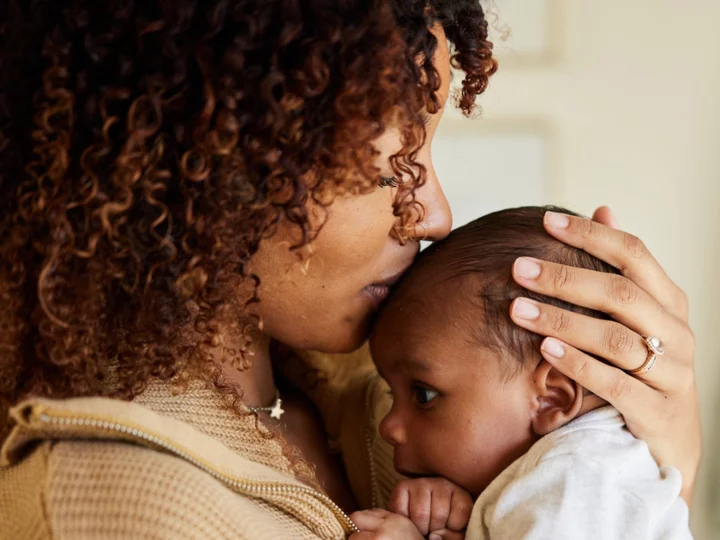
Mom explains how to ‘raise your baby like it’s your third’
One mom is exposing her secrets for first-time parents. In an interview with Today, mother of three Caroline Chambers opened up about the difficulties she endured with her first-born child. Although it’s very normal for mothers to experience certain symptoms related to postpartum, Chambers’ year of anxiety after delivery felt particularly difficult. “The first year of my child’s life was plagued with so much anxiety and fear,” she said. “Of course, I was obsessed with him and had so many amazing moments of just loving it, but there was also just a lot of fear around the unknown.” Despite the cookbook author’s prior struggles, she was still keen to grow her family. By the time her second child, Callum, was born, she’d gained a new perspective on being a parent. “None of it matters. They’re going to sleep eventually. None of it is actually a pattern. You can’t actually diagnose it. You can’t actually Google your way into better sleep. It just takes time,” she recalled to the outlet. Chambers is a mother to three sons: Mattis, five, Callum, three, and Cashel, one. While feeding schedules and nap times for her son Mattis were overwhelming and stress-inducing, Callum’s care was a “more joyful” experience for her, having already known what works and what doesn’t for newborns. The intuitive mother recognised that both parenthood and being a mother is “terrifying the first time because you don’t know what to expect”. Still, she explained that welcoming more children into her life helped her learn that babies aren’t the “precious little fragile creatures that we think they are.” Chambers took to her Instagram account last April, revealing her tips for raising your first child like your third. First, she suggested taking opportunities to “leave your baby”. Chambers emphasised the importance of taking time for yourself and allowing babysitters to take over for a few hours, so you can either go on a solo date or enjoy time with your partner. “Your husband isn’t the enemy. The baby is the enemy,” Chambers jokingly wrote. For her next tip, she said that “this too shall pass.” According to Chambers, each phase for a baby is fleeting, lasting around “two weeks and it’s on to the next thing”. Chambers also told her followers not to leave the house chores for when your baby asleep. Not only will this feel like you’re being overworked without any breaks, but Chambers pointed out how babies don’t mind watching you vacuum or do the dishes. “Put on your oxygen mask first,” she continued. “You can’t take care of your baby if you can’t take care of yourself. Take a shower. Eat delicious meals with lots of greens and protein. If you feel sad, call your OB and tell her about those feelings... Get a blowout. Go get lunch or dinner by yourself.” Lastly, Chambers urged mothers not to fall victim to the “four Bs of a bedtime routine” and maintained that following the sequence of “bath, boob/bottle, book, bed” isn’t necessary. “As long as the baby is fed and in bed, they will not care how you get them there. Dunked in the bath once a week, they are FINE,” she wrote. Many thankful mothers chimed in, adding their own advice and experience after Chambers encouraged them to do so in her caption. “Love this!!!!! We bathe our baby one to two times a week. MAX. I’d also add: the whole eat, play sleep order is BS! Don’t stress about it. Feed when they need it. Love following you & learning mama,” one mother noted. Another commented: “For the toddler phase: Tell them, ‘I’m going to close my eyes and when I open them, I’ll see… (insert whatever you’re trying to get them to do)”. This ALWAYS works for my kiddo when I need him to put on his clothes, go to the bathroom, etc. It’s magic!” The Independent has reached out to Chambers for a comment. Read More People rally around mother who explained why she ‘hates being a mom sometimes’ Princess Eugenie apologises as she makes motherhood confession ‘It was terrifying’: All the things Jada Smith Pinkett has said about her alopecia ‘It was terrifying’: All the things Jada Smith Pinkett has said about her alopecia Scientists say we’ve all been using sunscreen wrong in new cancer warning If being without your phone fills you with dread, you could have nomophobia
2023-11-01 01:22
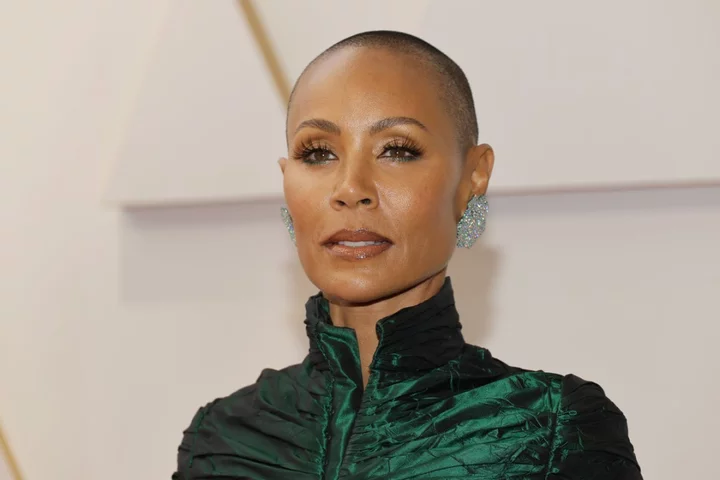
‘It was terrifying’: All the things Jada Smith Pinkett has said about her alopecia
Viewers of Sunday evening’s Oscars ceremony were astonished to watch Will Smith strike comedian Chris Rock after he made a joke at the expense of his wife, Jada Pinkett Smith. Rock was presenting the award for Best Documentary when he made a joke about Pinkett Smith’s appearance. “Jada, I love you. GI Jane 2, can’t wait to see you,” he quipped in an apparent reference to the actor’s shaved head. The Red Table Talk host, who has spoken candidly about her hair loss from alopecia in the past, was seen rolling her eyes at the comment. Will then walked onstage and struck the comedian, yelling “keep my wife’s name out your f***ing mouth”. The 50-year-old actor first revealed that she had alopecia in 2018, describing the sudden hair loss she experienced as “terrifying”. Speaking to her mother Adrienne and daughter Willow on an episode of Red Table Talk, the actress recalled losing “handfuls of hair” in the shower one day. She then explained how her condition prompted her to cut all her hair off. “I’ve been getting lots of questions about why I’ve been wearing this turban,” she said. “Well, I’ve been having issues with hair loss. “And I’ll tell you it was terrifying when it first started. I was in the shower one day and then just handfuls of hair, just in my hands, and I was like ‘oh my God am I going bald?’ “It was one of those times in my life when I was literally shaking with fear.” The Girls Trip star added that maintaining a sense of perspective has helped her cope. “People are out here with cancer, with sick children… I watch the higher power take things every day and if the higher power wants to take my hair? That’s it? God, you want my hair? “When I looked at it from that perspective it did settle me.” She went on to credit turbans for helping her feel empowered as a result of her hair loss. “When my hair is wrapped, I feel like a queen,” she said. In July 2021, fans praised Pinkett Smith after she debuted a new buzz cut, saying it was “time to let go” after her struggle with hair loss. The actor posted about the new style on her own Instagram, where she uploaded a short video of herself posing against a backdrop of flowers and revealed that her daughter had been the one to encourage her to cut off her hair. “Willow made me do it because it was time to let go BUT … my 50s are bout to be Divinely lit with this shed,” the 49-year-old captioned the video. And in December, the Matrix Resurrections actor shared a video to Instagram during which she pointed out a line on her scalp that had developed as a consequence of the condition. “Now at this point, I can only laugh,” she said at the start of the video. “Y’all know I’ve been struggling with alopecia and just all of a sudden one day, look at this line right here. Look at that,” she said. “So it just showed up like that and this is going to be a little bit more difficult for me to hide.” “So I thought I’d just share it so y’all are not asking any questions,” Pinkett Smith added. She joked: “But you know mama’s going to put some rhinestones in there. I’m going to make me a little crown,” she said. “That’s what mama’s going to do.” Pinkett Smith previously revealed that the cause of her own alopecia had not been identified by doctors, but that she believed it may be stress-related. According to the NHS, hair loss, known medically as alopecia, is fairly common. It's estimated that around 40 per cent of women aged 70 years or over experience female-pattern baldness – the most common type of hair loss, which is thought to be inherited. Hair loss can be genetic, or as a result of extreme stress, a medical condition or treatment. It's also common for women to lose more hair than usual up to three months after they've given birth. Read More ‘It was terrifying’: All the things Jada Smith Pinkett has said about her alopecia Will Smith issues ‘official statement’ on Jada Pinkett Smith marriage Will Smith releases bizarre ‘official statement’ video after marriage revelation Will Smith speaks to crowd about relationship with Jada Pinkett Smith Jada Pinkett Smith built ‘love nest’ for her and Will Smith to spend alone time Jada Pinkett Smith reveals why she and Will Smith never signed a prenup
2023-10-31 05:54

Scientists say we’ve all been using sunscreen wrong in new skin cancer warning
Most people do not apply enough sunscreen or wear adequate clothing when out in the sun for too long, according to a new study that warned that the product may be giving them “a false sense of security”. The research, published recently in the journal Cancers, sheds more light on the observation that melanoma and skin cancer rates are rising globally despite a rise in sunscreen usage – an oddity termed the “sunscreen paradox”. “The problem is that people use sunscreen as a ‘permission slip’ to tan. People think they are protected from skin cancer because they are using a product marketed to prevent a condition,” study co-author Ivan Litvinov from McGill University in Canada said. In the research, scientists found that Canadians living in provinces with incidence rates for melanoma – one of the most aggressive forms of skin cancer – were more likely to report using sun protection, more aware of the health risks of sun exposure, and more apt to follow the UV index. Overall, scientists assessed data from 22 focus groups encompassing 95 Atlantic Canada residents. The analysis found that despite reporting more awareness and intent for protection from the sun, people in these provinces received more sun exposure due to warmer temperatures and a tendency to engage in outdoor activities. In another assessment of people in the UK, they found contradicting evidence that sunscreen use was surprisingly linked to an over two-fold risk of developing skin cancer. “These combined findings suggest a sunscreen paradox, whereby individuals with higher levels of sun exposure also tend to use more but not an adequate quantity of sunscreen or other sun-protection measures, providing a false sense of security,” Dr Litvinov explained. Scientists call for new interventions, considering this sunscreen paradox, to address knowledge gaps in sun protection and skin cancer prevention. “Sunscreen is important, but it is also the least effective way to protect your skin when compared to sun protective clothing, rash guards, and sun avoidance. People can and should enjoy the outdoors, but without getting a sunburn or a suntan,” Dr Litvinov added. Read More If being without your phone fills you with dread, you could have nomophobia When do the clocks go back in the UK this year? Nursery places and wraparound childcare plans announced
2023-10-30 13:48

US shifting COVID antivirals to commercial market on Nov. 1
By Ahmed Aboulenein WASHINGTON Most people will retain access to Pfizer's Paxlovid and Merck's Lagevrio COVID-19 oral antiviral
2023-10-28 04:29

If being without your phone fills you with dread, you could have nomophobia
If you’re filled with terror at the prospect of being without your phone, you’re not alone. A new poll has found that 42% of British adults identify with ‘nomophobia’ – the fear of being stuck without mobile phone connectivity. According to psychologist Dr Linda Papadopoulos, nomophobia is firstly about “dependency”, and secondly about “slight catastrophising”. She said: “The key to having a healthier relationship with your phone is implementing values, boundaries and being self-aware when it comes to how we use our phones.” Of the 2,000 people surveyed by Sky Mobile, 23% said they would rather hold a tarantula, 14% said they would prefer to go swimming with sharks, and 15% said sleeping in a haunted house would be better than being without 5G for an entire week. According to the research, on average British people use their phone for 14 hours per week. Here’s what you need to know about phone addiction – and how it might be impacting our wellbeing… How can we spot the signs of nomophobia or phone addiction? According to Papadopoulos, it’s quite simple. “If you’re engaging and constantly checking to see where your phone is or if you’ve missed a call, [and are] worried, anxious about the possibility of missing out” – whether this is a social event or something work-related – you could have nomophobia, Papadopoulos suggested. “We’re at our most peaceful when we feel like we have control over something.” She encourages you to think about the first thing you look for when you wake up or walk out the door – if it’s your phone, it could be a sign of nomophobia. “There’s also this thing where we think our phone is vibrating, and it’s not. That’s another sign too.” Has social media made it worse? It’s important to understand what our phones are to us. “They’re no longer just phones, right? They are these digital prostheses, which we use to do everything from learn to work to connect,” said Papadopoulos. “In the case of things like social media, we know that a big part of our desire to be on those apps is around that sense of not just belonging – which obviously they were originally intended for – but also that sense of missing out. “So I think anything that you do, which relates to who you are, your expectations around your work, your personal life, are all going to feed into this.” How might it be impacting our wellbeing? “It all depends on what we are doing with our phones. If I’m sitting down doom scrolling, of course it will affect how I’m feeling. That’s not great,” she suggested. “You want to own your technology instead of your technology owning you. Don’t catastrophise your mobile phones, because there are other things you can do to remain connected and it can lead to technology separation anxiety – the disproportionate sense of fear of being without your technology. “When you are talking about any sort of addiction, if it gets in the way of your day-to-day life, you start having disproportionate reactions, struggle to engage with people in real life, your sleeping pattern is non-existent or not eating your dinner, those are the sorts of things you should look out for when it comes to nomophobia. “For example, if a 12-year-old girl is posting a bunch of things on social media and sitting at her phone waiting for likes, that would be a sign of her phone affecting her mental health.” But there are also positives to mobile phones, Papadopoulos adds. “I live really far away from my family. Sometimes I even cook with my mum, even though she lives in Cyprus,” she said. How can we start to address it if we think we have a problem? “Do basic things like keeping your phone in the same place to avoid using brain power constantly looking for where it is,” Papadopoulos advised. “And don’t vilify or deify your mobile phone. It’s neither the best thing in your life or the worst. This will help you start to get a sense of control over those anxious thoughts.” If you’re concerned that your behaviour might be addictive, see your GP for help. For more information on how to switch to Sky Mobile visit https://www.sky.com/shop/mobile. Read More Nursery places and wraparound childcare plans announced Is scalp exfoliation the key to healthier hair? Why do some people love horror movies? TikTok influencers warn about ‘potent’ steroid cream risks among black women – dermatologist explains the risks House of the Year 2023 shortlist revealed by Royal Institute of British Architects Fatima Whitbread supporting new fostering campaign, as research finds ‘misconceptions put people off’
2023-10-27 16:59

Nursery places and wraparound childcare plans announced
Parents can go online to find out what childcare they are eligible for under plans which will see nurseries expanded to provide more places and funding given to councils for wraparound care. Further details of the previously-announced reforms to allow some families of children as young as nine months to claim 30 hours of free childcare a week – set out by Chancellor Jeremy Hunt in the March Budget – have been announced. The Department for Education said parents in England can visit an eligibility checker online to see what they are entitled to, depending on their earnings and their child’s age. The Government said £100 million is being made available for nursery and early years places, with funding intended to support childcare settings to increase their physical space, which the department said is anticipated to add thousands of new places across the country. Following Mr Hunt’s target for all schools to be able to offer care either side of the school day by September 2026, local authorities will also now be getting details of how much of the £289 million wraparound fund they will receive – based on “anticipated need”. Early years leaders had previously expressed concerns that nurseries and childminders could struggle to deliver additional places for younger children from next year if the funding provided by the Government does not meet rising costs. The offer of free childcare for working parents will be available to those with two-year-olds from April 2024, covering around half a million parents, but it will initially be limited to 15 hours. From September 2024, the 15-hour offer will be extended to children from nine months, helping a total of nearly a million parents, and the full 30-hour offer to all under-fives will come in from September 2025. This is the largest investment in childcare in our history, so I encourage people with young children or those thinking about starting a family to visit the Childcare Choices website to find out what they’re eligible for Education Secretary Gillian Keegan Education Secretary Gillian Keegan said: “No-one should have to choose between having a career and having a family, so I’m determined that every parent who wants it should have access to the childcare they need. “Flexibility is at the heart of our plans to transform childcare for families, whether it’s offering quality childcare out of school hours or making sure there are more early years places where they’re needed most. “This is the largest investment in childcare in our history, so I encourage people with young children or those thinking about starting a family to visit the Childcare Choices website to find out what they’re eligible for.” Paul Whiteman, general secretary of school leaders’ union NAHT, said that far more investment is needed. “Unfortunately, the money behind this expansion is a fraction of what is required. Our members are also questioning where they will find the additional staff,” he said. “There is a real danger that the Government’s promises could fall short in reality if they don’t urgently look again at the funding and resources.” Helen Hayes, Labour’s shadow children and early years minister, added: “Without more details about whether this is new money, how many places it will provide and how new childcare will be staffed this pledge isn’t worth the paper it’s written on. “The Conservatives have overseen a dramatic fall in the number of childcare providers and places – they simply cannot be trusted to deliver the change in childcare that families need and deserve.” The department also said the childminder start-up grant scheme will open for applications by the end of November. The grant – £600 for those who register with Ofsted and £1,200 for those who register with a childminder agency – is aimed at boosting the numbers of childminders working to offer parents more flexible childcare. Work and Pensions Secretary Mel Stride said: “Boosting employment is key to growing our economy, and the extra money provided for parents on Universal Credit will give them the flexibility and security they need to find a job, support their children and reap the benefits of work. “I encourage every parent to access this resource to see what help is available and to talk to one of the thousands of Work Coaches in our Jobcentres who are there to help them find work or enhance their skills.” Parents can visit childcarechoices.gov.uk to use the eligibility checker. Read More Is scalp exfoliation the key to healthier hair? Why do some people love horror movies? TikTok influencers warn about ‘potent’ steroid cream risks among black women – dermatologist explains the risks House of the Year 2023 shortlist revealed by Royal Institute of British Architects Fatima Whitbread supporting new fostering campaign, as research finds ‘misconceptions put people off’ 5 key coat trends to complete your autumn/winter wardrobe
2023-10-27 15:54
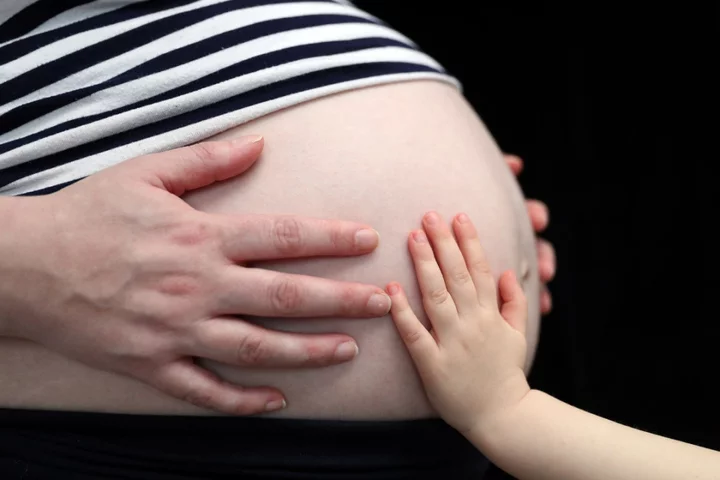
Your forties is the perfect decade to have your first child – I’m living my best life
Seven years ago, I was at my local antenatal class preparing for the birth of my firstborn. In my forties and armed with a coloured birthing ball, I looked around and gasped. All the other soon-to-be-mums were at least a decade younger than me. Some were nearly half my age. It briefly panicked me. Would I make any friends? Why did I leave it so late to have kids? Was I doing something wrong? In hindsight, though, I had no reason to worry: your forties is absolutely the best decade in which to have your first child. According to data published last week in The Daily Telegraph, the number of women becoming first-time mothers in their forties has increased in recent years: today, one in 25 UK births is to a woman aged 40-plus. That’s a lot of women just like me, despite the fact that getting pregnant over 35 gets you labelled as someone of “advanced maternal age”. That might sound harsh until you remember that older pregnancies used to be termed “geriatric” – thank God that’s been phased out. I’ve never regretted waiting until my forties, even if I had been trying for children for years by that point. My story is undeniably unique: my partner Alex took his own life while we were doing IVF, but that didn’t stop me from continuing to try to get pregnant. The maternal call was strong, so I decided to carry on with the process using Alex’s frozen sperm. Today I have two beautiful daughters with him: Lola, seven, and Liberty, five. It is an understatement to say I was ready for a baby at 40. I was grounded. Confident. Unlike when I was in my twenties or thirties, I knew exactly who I was and what made me tick. I had life experience. I no longer got FOMO. I didn’t even drink, having been through hell and back to become sober 20 years earlier. My career was fully off the ground, and therapy had helped me identify the family dysfunction I knew to ditch for the sake of my kids. I also wasn’t worried about my body bouncing back after the birth. I just desperately wanted to be a mum. Of course, there are all sorts of advantages to having children in your twenties and thirties. A huge bonus is that you’re simply more fertile. According to research, 31 is the magic age to have a baby – you’re still as fertile as in your twenties, but you also have more money. I’m sure motherhood in your fifties is great, too – although using your own eggs is highly unlikely, unless you froze them at some point before you turned 35. It means that some older mums often turn to donor eggs. Thinking back on my twenties and thirties, I don’t know how I would have managed motherhood. I don’t think I was ready to put my own needs on hold. I can’t imagine how hard it would have been to juggle work and my children, especially with the spiralling costs of childcare. I do accept that there are greater risks inherent in waiting to have kids. Both the quantity and quality of eggs dwindle. The rates of failed fertilisation, miscarriage and birth defects rise with age. There’s also the social pressure that comes with not having children early – you’re forced into endless conversations about the “ticking timebomb” of your fertility, and expected to fend off probing inquiries about your biological clock. The British Fertility Society advises women to start trying for a baby by the age of 32 at the latest, for a 90 per cent guarantee of having a child without resorting to IVF. But this advice simply wouldn’t have worked for me – I was determined to find the right person to have children with, and that didn’t happen until I was 35. When mine and Alex’s attempts to naturally conceive failed, and then Alex died, only at that point did I know I had the maturity to go it alone. I do have some regrets – I wish I’d frozen my eggs at the peak of my fertility in my mid-twenties, for instance (this process costs between £4,000 and £7,000 in the UK). But otherwise, having children in my forties was the right thing to do. Yes, I had my wobbles. I remember sobbing on the bathroom floor after yet another failed pregnancy test. I would berate myself for leaving it so late. I had to force myself to remember that many women experience fertility struggles in their twenties and thirties, too. All of those anxious feelings, though, flew out the window once I had my first child. When I left the hospital to begin parenthood alone, a new bag of nappies in hand, I didn’t have a meltdown. I was just so grateful that I’d had a baby, especially when the odds seemed so stacked against me. Sleepless nights trying to coax my child back to sleep were what I had most desired. It was all so good, in fact, that I went on to have a second child in my forties. I had a spare embryo in a freezer in St Petersburg. Now I call her Liberty. Every day since becoming a mum, I have embraced the mess and chaos, and appreciate every minute. I’m sure my younger self would cringe at the thought of me spending my evenings helping my children with their homework. But I’m proud to say that I’m living my best life. Read More Vanessa Hudgens addresses pregnancy speculation amid Cole Tucker engagement Rachel Bilson reveals she’s suffered multiple miscarriages Pregnant woman has maternity photo shoot in hospital before giving birth Hailey Bieber responds to ‘disheartening’ pregnancy rumours Like Rebecca Adlington, I also lost my baby at 20 weeks Britney Spears reveals she had an abortion while dating Justin Timberlake
2023-10-27 13:57
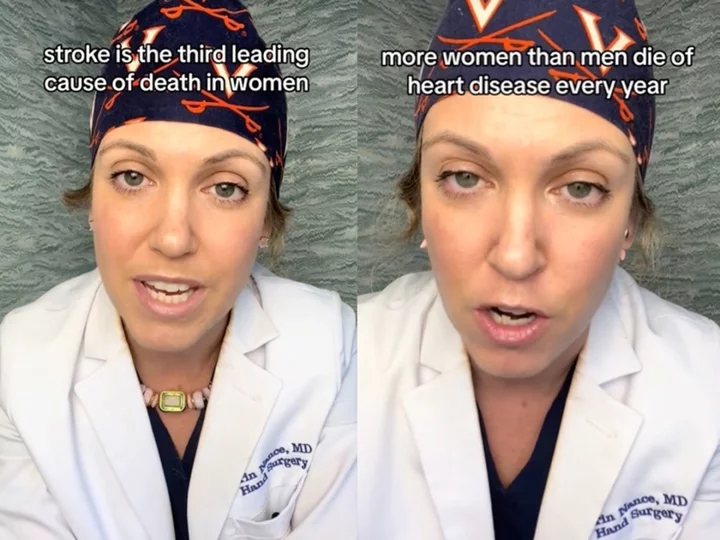
From strokes to heart attacks: Doctor highlights most commonly misdiagnosed health conditions in women
It’s no secret that women are more likely than men to be misdiagnosed by a medical professional. In fact, as many as 57 per cent of women have reported being wrongly diagnosed by a doctor. In 2016, a study found that women have a 50 per cent higher chance than men of receiving a misdiagnosis after a heart attack, while researchers found in 2014 that 33 per cent of women are more likely than men to be misdiagnosed after a stroke. When it comes to women’s health, an explicit gender bias in medicine can lead to serious and sometimes life-threatening results. That’s why Dr Erin Nance, an orthopaedic hand and wrist surgeon located in New York City, has dedicated the month of October to sharing the most commonly misdiagnosed health conditions that affect women. Her series has since gone viral on TikTok, as she discussed how symptoms of rare autoimmune disorders or infertility can present differently in women, leading to a misdiagnosis. For the first video of the series, Dr Nance revealed how postural orthostatic tachycardia syndrome - also known as POTS - affects more than one million people, but is present in mostly women aged 20 to 50. However, Dr Nance explained that POTS is so difficult to diagnose because “we can’t see it”. “This is the group of women that get written off by doctors because they look healthy. There doesn’t seem to be anything wrong with them,” she said. According to the National Institute of Neurological Disorders and Stroke, POTS is a condition in which a reduced volume of blood returns to the heart after someone stands up from a lying down position. As a result, patients with POTS may experience an increased heart rate, dizziness, or fatigue when they stand up after lying down. @littlemissdiagnosed Day 1: It’s me, POTS, I’m the the problem it’s me #littlemissdiagnosed #31for31lmd #pots ♬ original sound - Dr. Erin Nance 🇺🇸 Dr Nance explained that some other symptoms of POTS include “chronic fatigue, brain fog, total body chronic pain, GI [gastrointestinal] stomach issues, anxiety, headaches, and it can affect any part of your body”. Another difficulty about POTS is that there’s “no specific treatment” to help the condition, Dr Nance said. “We can’t do a biopsy, we can’t do any imaging, there’s no blood test for it,” she added. Instead, doctors may recommend drinking more fluid, exercising regularly, or wearing compression stockings to keep blood flow in the centre of the body. For the 14th day of her video series, Dr Nance received 1.4m views when she spoke about the commonly misdiagnosed symptoms of stroke in women. “Stroke is the third leading cause of death in women,” she began the clip. “Yet, women are over 33 per cent more likely to be misdiagnosed when having an acute stroke.” Dr Nance admitted that most women who experience a stroke are often told by doctors that they simply have anxiety or a migraine. When it comes to the “unique” symptoms of stroke that are present in women, some may experience loss of consciousness or fainting; general weakness; shortness of breath; confusion, unresponsiveness, or disorientation; sudden behavioural change; agitation; hallucination; nausea or vomiting; seizures or even just hiccups. @littlemissdiagnosed Day 14: Stroke is no joke #littlemissdiagnosed #31for31lmd #stroke ♬ original sound - Dr. Erin Nance 🇺🇸 “These unique symptoms are often the ones that are overlooked,” Dr Nance said, before detailing the individual risk factors that can put women at a greater chance of having a stroke. The first on the list of risk factors was taking birth control pills, followed by pregnancy, hormone replacement therapy, and history of suffering from migraines. “The reason why this is so important for everyone - every normal, everyday person - to know this is because the best outcomes are when women are evaluated and treated within three hours of having this symptom,” Dr Nance added. On day 16, the orthopedic surgeon explained how symptoms of a heart attack can also be wrongfully overlooked by doctors. “More women than men die of heart disease every year, yet women have a 59 per cent increased risk of being misdiagnosed with acid reflux, stress, or anxiety,” Dr Nance said. Besides chest pain, a woman may exhibit signs of a heart attack when she experiences unusual fatigue for several days; sleep disturbances; shortness of breath; lightheadedness; nausea or cold sweats; indigestion or gas-like pain; and pain in the arm, neck, jaw, or back. @littlemissdiagnosed Day 16: It’s not always Big on the Peloton #littlemissdiagnosed #31for31lmd #heartattack #womensheart ♬ original sound - Dr. Erin Nance 🇺🇸 When it comes to multiple sclerosis (MS), Dr Nance revealed on day 19 of her video series that women are 83 per cent more likely to be misdiagnosed for MS by a doctor. MS is a disease that affects the “myelin” - the protective sheath covering the brain, nerves, and the spinal cord. According to Dr Nance, some of the often-missed signs of MS include extreme fatigue, confusion, forgetfulness, and mood swings. @littlemissdiagnosed Day 19: You’re gonna be okay #littlemissdiagnosed #31for31lmd #ms #multiplesclerosis ♬ original sound - Dr. Erin Nance 🇺🇸 As for lupus - an autoimmune disease in which the immune system attacks its own tissues, causing inflammation in the body - Dr Nance shared in the 20th video of her series that women between the ages of 15 and 45 are most likely to develop the disorder. “The average time from when you first develop your symptoms to diagnosis is six years,” Dr Nance revealed. @littlemissdiagnosed Day 20: Sneaky little 👿 #littlemissdiagnosed #31for31lmd #lupus ♬ original sound - Dr. Erin Nance 🇺🇸 She claimed that 46 per cent of patients report being misdiagnosed with something other than lupus, while “54 per cent of them were told that either nothing was wrong with them or that their symptoms were psychological.” “The main problem with lupus is that the longer you go undiagnosed and untreated, then the greater risk for end organ damages,” she added. The Independent has contacted Dr Nance for comment. Read More How to optimise your 22 minutes exercise a day according to fitness experts TikTok influencers warn about ‘potent’ steroid cream risks among black women – dermatologist explains the risks Want to be a useful man? Arnold Schwarzenegger is here to tell you how How to optimise your 22 minutes exercise a day according to fitness experts TikTok influencers warn about ‘potent’ steroid cream risks among black women – dermatologist explains the risks Want to be a useful man? Arnold Schwarzenegger is here to tell you how
2023-10-27 04:51
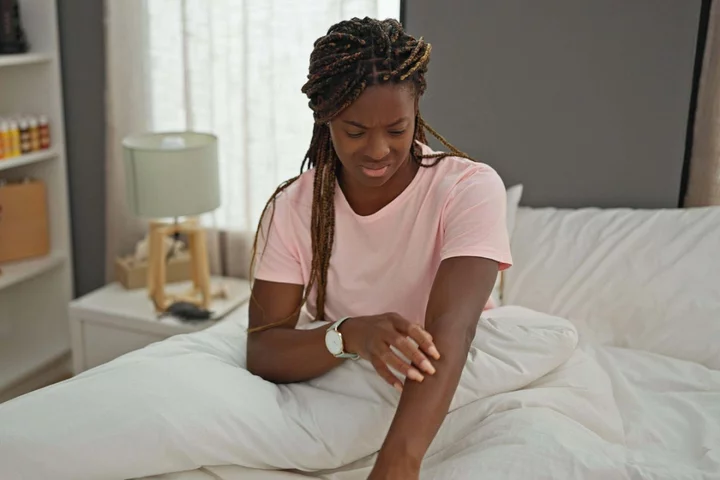
TikTok influencers warn about ‘potent’ steroid cream risks among black women – dermatologist explains the risks
According to skin influencers on TikTok, topical steroid creams are being ‘illegally sold’ in some black Afro hair and beauty supply stores, affecting black women in particular. Angela Mavalla, a pharmacist and skincare educator, has been sharing TikTok videos garnering thousands of views, encouraging black women to stop purchasing topical steroid creams from these shops – as they are meant to be prescription-only treatments used with appropriate guidance from a doctor. When used incorrectly, the creams can make potentially make skin symptoms worse and harder to manage. “Though these creams tend to address issues like acne and eczema very quickly, because of their potent nature, the skin becomes addicted to it and will flare up badly once you stop using them,” said Mavalla. “A lot my clients – [who are black women] – that I consult privately, were coming to me with issues relating to topical steroid use, such as having terrible flare-ups because they had stopped using the cream, and needed help with tapering off them. “I began making content based on these creams, mainly to warn people of them, and found that these TikTok’s would go viral in a short space of time, with lots of people relating to it, and giving their own testimonials of how the creams damaged their skin,” Mavalla added. “I have seen instances of accidental skin bleaching, worsened eczema and hyperpigmentation, topical steroidal withdrawal and addiction, and worst of all, a crippling low self-esteem and self image. It’s awful. “The first point of call when it comes to steroidal creams should always be a pharmacy. Pharmacists are always willing to help, advise and where necessary, signpost to the most appropriate medical profession, such as a dermatologist.” Dr Unnati Desai, the national GP lead, as well as safeguarding lead for GP services and dermatology lead at Nuffield Health, acknowledged that it can take sometimes take time to correctly diagnose these conditions, and might require a biopsy. It might also take a longer period of time to get symptoms under control, as skin conditions may require trying multiple different treatment regimes to find the one that suits each individual person, as well as getting to grips with individual triggers. What are topical steroid creams and what should they be used for? Doctors prescribe topical steroid creams to treat a wide range of skin complaints – but it’s important to have proper assessments first. “They are topical medications (synthetic corticosteroids) that have an anti-inflammatory action on the skin, by suppressing the skin immune system and constricting the blood vessels of the skin where applied,” Desai told the PA news agency. “They are used for dermatological conditions that result in inflamed, itchy or irritated skin – e.g. eczema, psoriasis, lichen simplex, lichen planus, lichen sclerosus and other autoimmune dermatoses.” Why do people experience topical steroid withdrawal after using steroid creams? When used incorrectly, topical steroids may have potentially significant side-effects. And as Desai warned: “Stopping any steroid treatment suddenly can often result in a flare-up of the condition, which may be worse than the original presentation.” There are some obvious signs and symptoms to look out for to figure out if you are experiencing topical steroid withdrawal, such as red, burning skin and a lumpy, papulopustular rash. “When using a steroid cream to get a dermatitis flare-up under control, especially when a more potent steroid cream has been used for a prolonged period of time, it is necessary to slowly come off the steroid cream and wean your skin off treatment by either reducing the potency of the cream, or the frequency [of application],” said Desai. “This gives the skin time to adjust to coming off the steroid cream slowly, but also clarifies whether the skin condition is coming under control with treatment. “Sometimes, severe dermatoses require long-term use of a medication to be controlled, in which case your doctor will consider alternative treatment modalities.” What damage can it do to your skin?Desai added: “Long-term use of potent steroid creams is not recommended, as there may be some systemic absorption, which can result in suppression of your body’s natural cortisol hormone at the worst. “In most cases, it is the long-term impact on the skin itself that is the concern, as regular or long-term use of steroid creams can impact the skin integrity and thickness, resulting in thinning of the skin, stretch marks, increased hair at the site of use, enlarged skin blood vessels and bruising. “Using a steroid cream when there is an underlying infection present on the skin will make the infection worse, or using steroid creams on the face can result in other chronic skin conditions, such as perioral dermatitis or other acneiform eruptions. “Occasionally, an allergy can develop to components within the cream that can make the dermatitis worse.” How can people remain safe? Desai stressed the importance of only using topical steroid treatments under the appropriate supervision of a qualified clinician. “In addition, as most chronic inflammatory skin conditions tend to result in drier skin, self-care at home with soap substitutes and emollients is important,” she said. “This includes gently cleansing the skin one to two times daily maximum (over-washing will negatively impact the skin barrier function, as will long hot bubble baths), and using unscented emollients (medical grade skin creams designed to gently hydrate the skin), which will better protect the skin and may, depending on the skin condition, make a flare-up less frequent or less severe. “If a steroid cream is needed, a doctor will recommend the amount of cream to be used according to the size of the area affected. We use the ‘Finger Tip Unit’ (FTU) – one FTU is the amount of topical steroid that is squeezed out from a standard tube along an adult’s fingertip – as a method of advising each patient how much cream they need to use with each application.” Read More House of the Year 2023 shortlist revealed by Royal Institute of British Architects Fatima Whitbread supporting new fostering campaign, as research finds ‘misconceptions put people off’ 5 key coat trends to complete your autumn/winter wardrobe 12 ways to weave some woodland wonder into your home Hibernation mode: 5 small self-care adjustments to make before the clocks change 13 possible cancer symptoms you should get checked out
2023-10-26 19:47

Pfizer, BioNtech say flu-COVID shot generates immune response
Pfizer and German partner BioNTech said on Thursday that their vaccine to prevent flu and COVID-19 generated a
2023-10-26 19:26
